
For over a hundred years, laminaria and fucus algae have been harvested off the most remote islands of the Solovetsky archipelago. In the early 20th century, they were used to produce iodine, which was crucially important for the Russian army in World War I. Nowadays, they are used to make cosmetics, nutritional supplements and snacks. At the same time, the technique of seaweed collection has not changed. People go out to sea on wooden boats and, standing on the stern, gather the seaweed using handheld scythes.
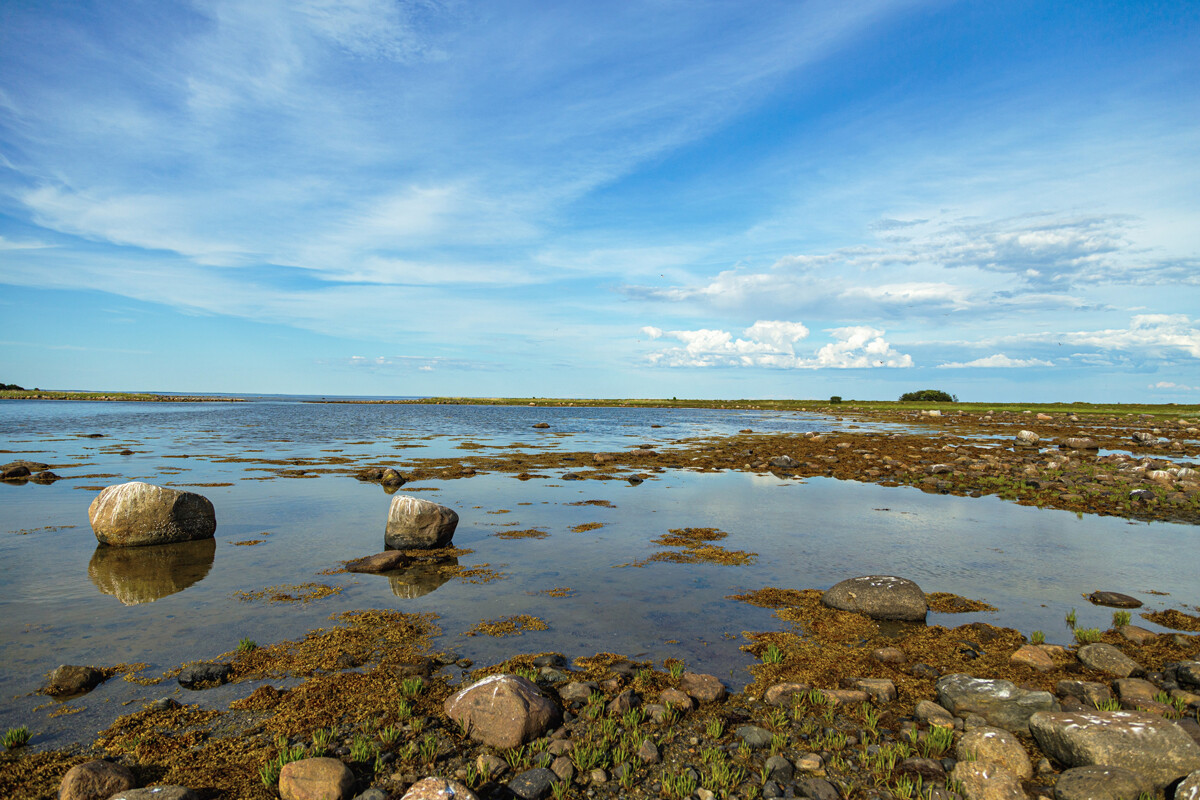
Malaya Muksalma is one of the “least touristy” islands of the Solovetsky archipelago. It is separated from the other islands by a narrow strait with stony shoals and a huge reef. Only an experienced captain, well familiar with the area, can pass here in a boat and only during certain months when the White Sea is not ice-bound or too stormy.
The island has just one small store, no entertainment and virtually no cell phone service - there is just a payphone from which you can only make calls within Arkhangelsk Region.
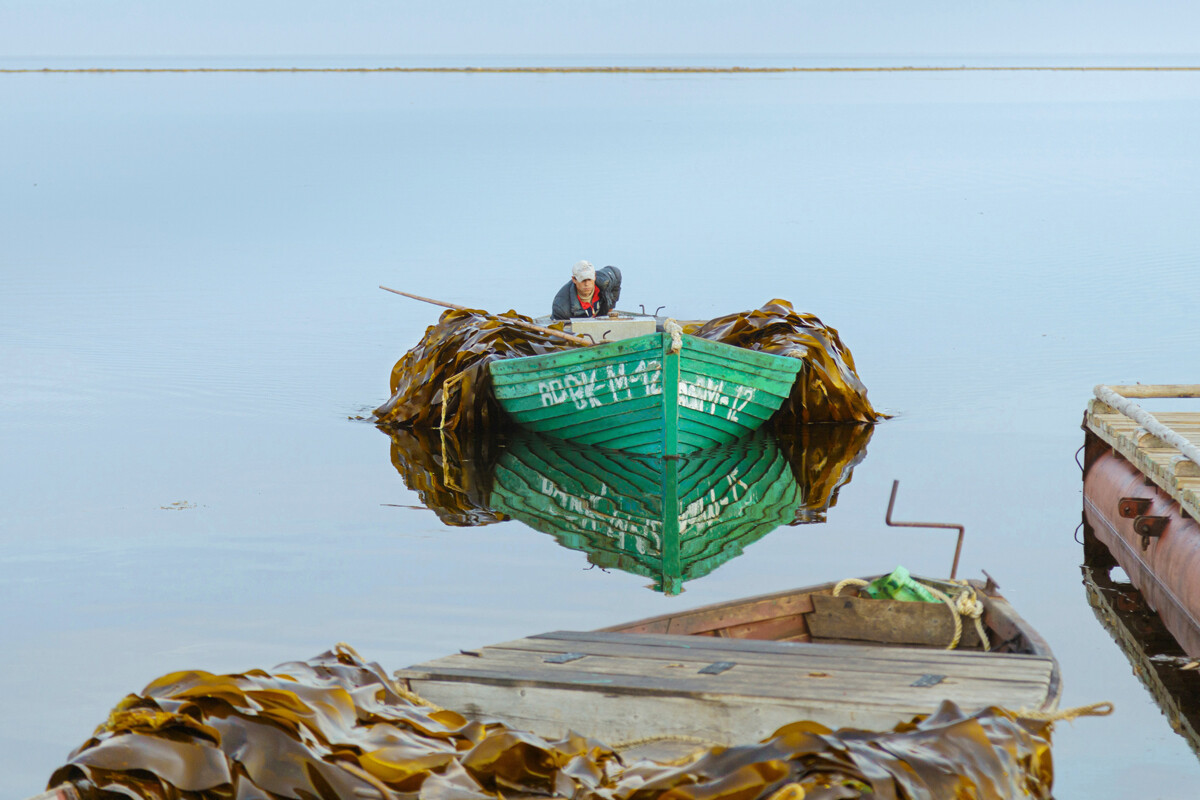
And it is here that laminaria and fucus algae are gathered from May to September. In the harsh Arctic conditions, these two types of seaweed accumulate a huge amount of microelements - more than 70, including food-grade iodine. But, as a hundred years ago, they are still gathered by hand.
For the most part, the seaweed is collected by men, because the job of seaweed gatherer is very demanding physically. Women also work on the island, doing different jobs: They cook and help to hang out the seaweed to dry.
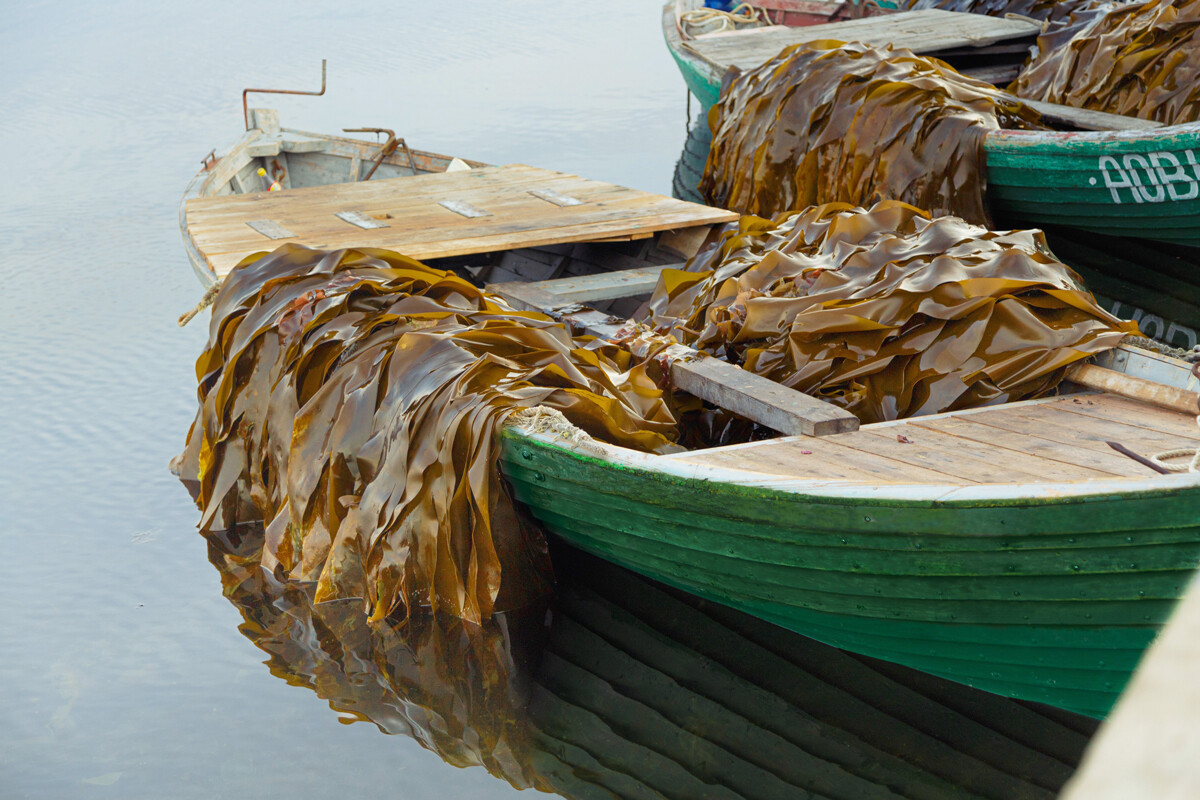
Seaweed gatherers go out to sea early in the morning, at 4 or 5 o’clock, since, in summer, it almost never gets dark on the Solovetsky Islands, thanks to their proximity to the Polar Circle. Each seaweed gatherer has their own wooden boat with a motor - the Pomors, old-time inhabitants of the Russian North, call it a ‘karbas’.
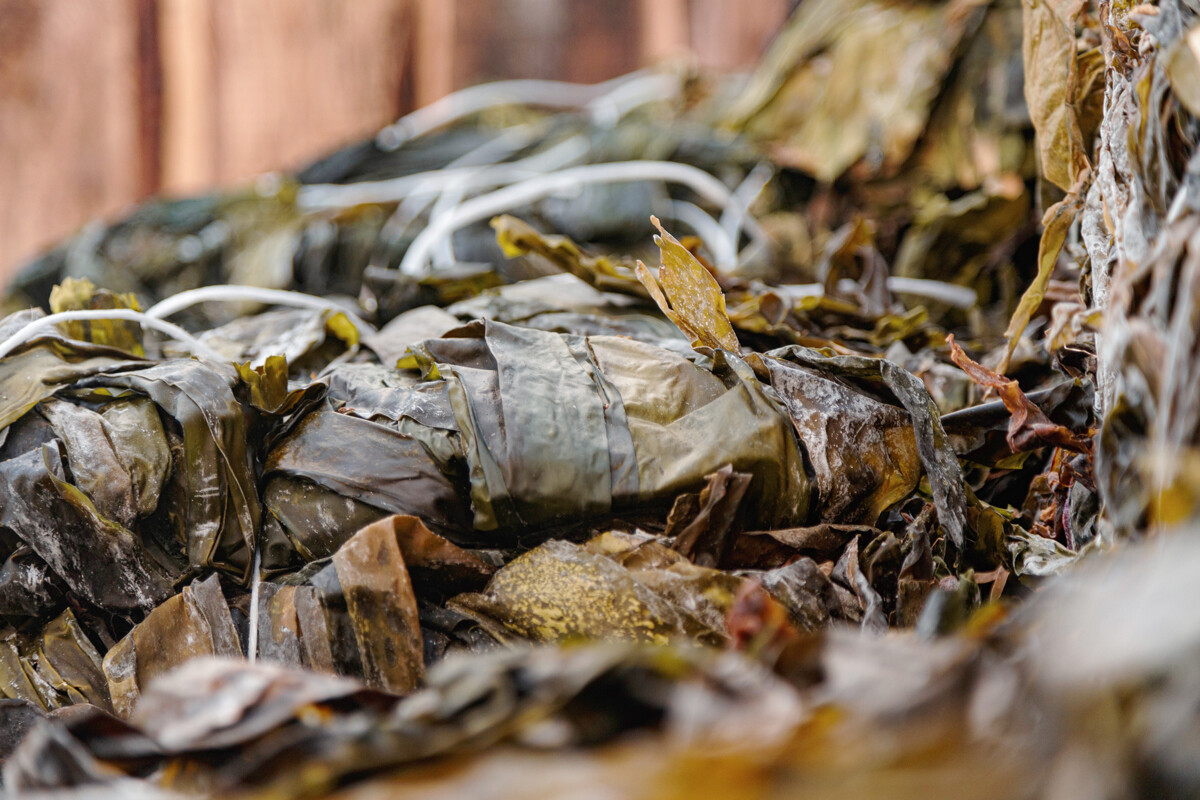
They carry a long scythe with welded prongs on a wooden handle. When the tide is out, the brown laminaria can be seen extremely well. The scythe is used to hook the seaweed by its base and haul it onto the boat. One such seaweed can grow to a length of six meters and it is no easy task to drag it up. By 11-12 o’clock, the boats are already returning to the settlement to hang out the seaweed to dry. During the season of White Nights, the raking crews go out twice a day.
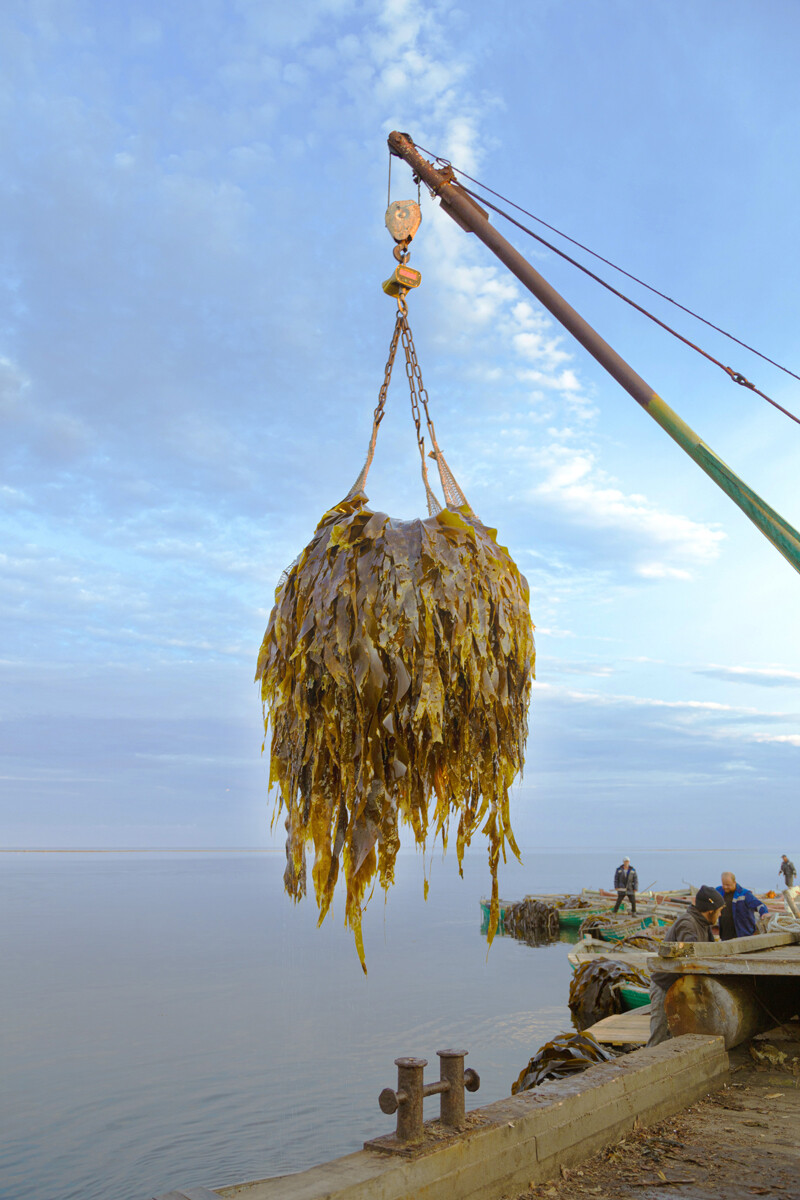
Up to half a ton and even a ton of seaweed can be gathered in a single day. It is dried in the open air and this is done very carefully, so as not to damage it. On average, the laminaria shrinks to one-sixth of its original size. In other words, six tons of seaweed are needed to obtain a ton of dried product. After that, the dried seaweed is sent to the processing plant.
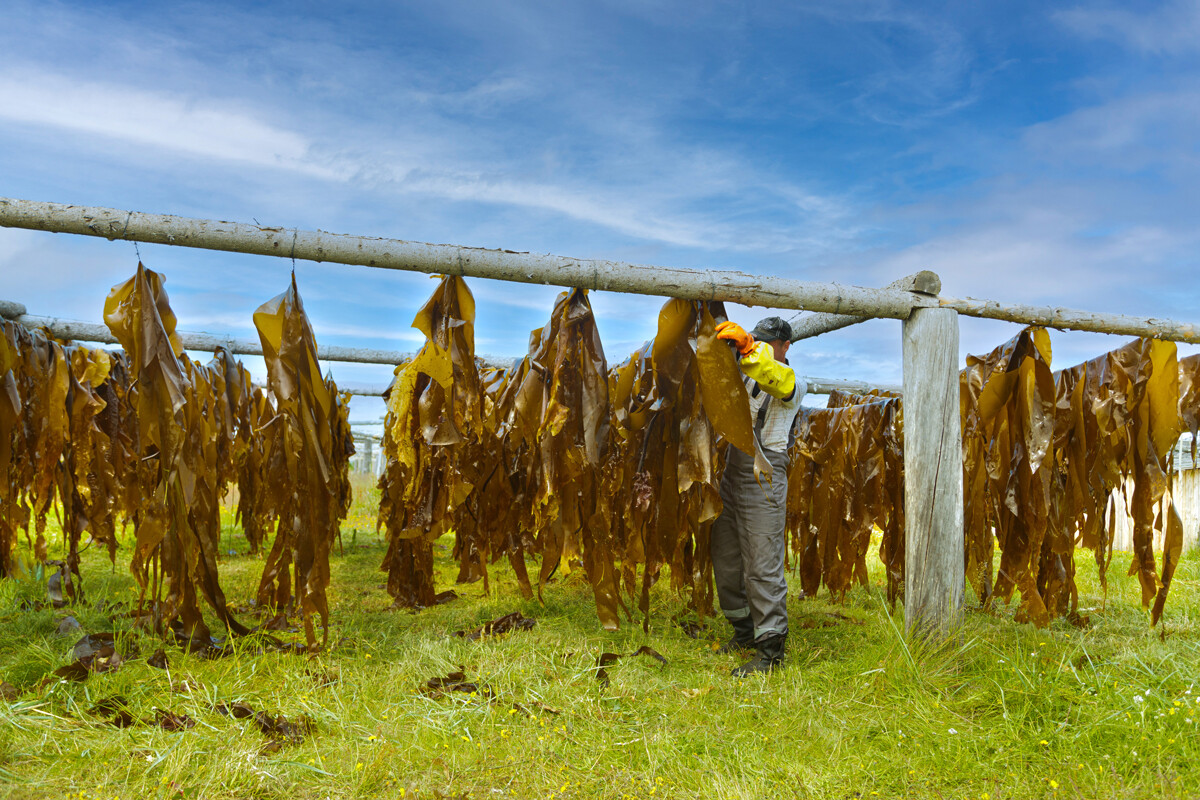
At Arkhangelsk, the White Sea seaweed is, for the most part, turned into different kinds of nutritional supplements, wholesome cosmetics, wound-healing dressings used in the treatment of burns and many other products.
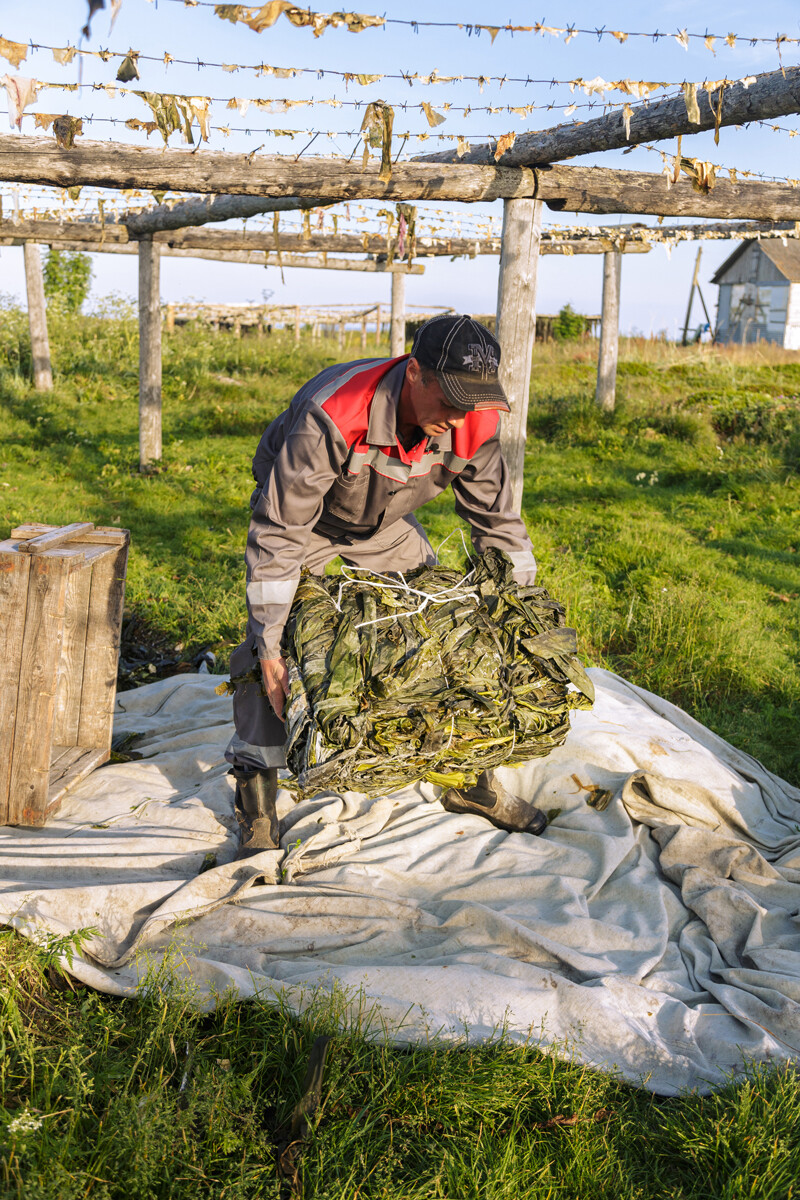
The fact that seaweed has remarkably beneficial properties was known by many ethnic groups back in ancient times, but industrial procurement only began in the 19th century, when iodine was discovered. At the time, it was used primarily for disinfection. In the early 20th century, Russia imported iodine from Europe, mainly Germany, but when World War I broke out, it had to hastily set up its own enterprises. Without disinfection, any wound could be fatal.

The Arkhangelsk Seaweed Plant was opened in 1918 to process laminaria gathered in the Solovetsky Islands.
Arctic seaweed began to be studied by biologists. In 1942, during the Siege of Leningrad, algologist Kseniya Gemp from Arkhangelsk helped to organize food production from stocks of laminaria found in one of the city’s scientific institutions. Porridge and patties were made from it, saving the lives of thousands of people.
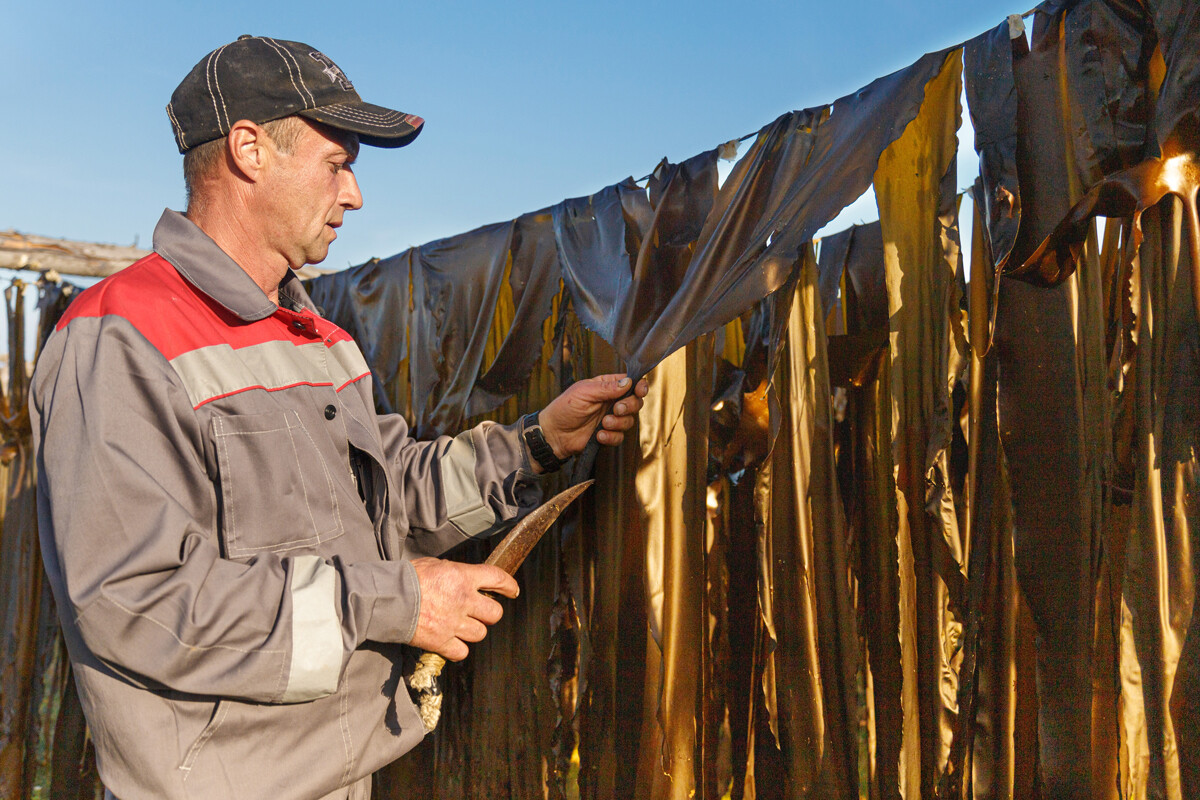
Subsequently, attempts were made to automate seaweed gathering and make the job of the Solovetsky Island seaweed gatherers easier. But, it turned out that the raking machines were hopelessly killing off the laminaria. The problem was that the seaweed attaches itself to rocks on the seabed using its root-like base (rhizoids) and the machines would pull it off entirely. The laminaria stopped growing altogether as a result. But, things are quite different when the job is done by people going out to sea. During harvesting, the laminaria and fucus are neatly cut off at the stalk, so neither the substrate nor the rhizoids are damaged and the remaining seaweed happily continues to grow where it did before.

Dear readers,
Our website and social media accounts are under threat of being restricted or banned, due to the current circumstances. So, to keep up with our latest content, simply do the following:
If using any of Russia Beyond's content, partly or in full, always provide an active hyperlink to the original material.
Subscribe
to our newsletter!
Get the week's best stories straight to your inbox